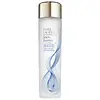What's inside
What's inside
 Key Ingredients
Key Ingredients

 Benefits
Benefits

 Ingredients Side-by-side
Ingredients Side-by-side

Water
Skin ConditioningTrehalose
HumectantPolymnia Sonchifolia Root Juice
Skin ConditioningLactobacillus
Skin ConditioningOrobanche Rapum Extract
Skin ProtectingSodium Hyaluronate
HumectantAcetyl Glucosamine
Skin ConditioningAlpha-Glucan Oligosaccharide
CleansingAcetyl Heptapeptide-4
HumectantBiosaccharide Gum-4
Skin ConditioningSodium Polyglutamate
HumectantMaltodextrin
AbsorbentPropanediol
SolventCaprylyl Glycol
Emollient1,2-Hexanediol
Skin ConditioningSodium Gluconate
Skin ConditioningTropolone
Skin ConditioningWater, Trehalose, Polymnia Sonchifolia Root Juice, Lactobacillus, Orobanche Rapum Extract, Sodium Hyaluronate, Acetyl Glucosamine, Alpha-Glucan Oligosaccharide, Acetyl Heptapeptide-4, Biosaccharide Gum-4, Sodium Polyglutamate, Maltodextrin, Propanediol, Caprylyl Glycol, 1,2-Hexanediol, Sodium Gluconate, Tropolone
Water
Skin ConditioningBifida Ferment Lysate
Skin ConditioningPropanediol
SolventPEG-75
HumectantLactobacillus Ferment
Skin ConditioningAcetyl Hexapeptide-8
HumectantAcetyl Glucosamine
Skin ConditioningSodium Hyaluronate
HumectantAnthemis Nobilis Flower Extract
MaskingCaffeine
Skin ConditioningDipotassium Glycyrrhizate
HumectantHydrolyzed Rice Extract
Skin ConditioningBetaine
HumectantMaltodextrin
AbsorbentCarbomer
Emulsion StabilisingTromethamine
BufferingCitric Acid
BufferingTrehalose
HumectantButylene Glycol
HumectantCaprylyl Glycol
EmollientPPG-5-Ceteth-20
EmulsifyingPentylene Glycol
Skin ConditioningDisodium EDTA
Sodium Citrate
BufferingPhenoxyethanol
PreservativePotassium Sorbate
PreservativeWater, Bifida Ferment Lysate, Propanediol, PEG-75, Lactobacillus Ferment, Acetyl Hexapeptide-8, Acetyl Glucosamine, Sodium Hyaluronate, Anthemis Nobilis Flower Extract, Caffeine, Dipotassium Glycyrrhizate, Hydrolyzed Rice Extract, Betaine, Maltodextrin, Carbomer, Tromethamine, Citric Acid, Trehalose, Butylene Glycol, Caprylyl Glycol, PPG-5-Ceteth-20, Pentylene Glycol, Disodium EDTA, Sodium Citrate, Phenoxyethanol, Potassium Sorbate
 Reviews
Reviews

Ingredients Explained
These ingredients are found in both products.
Ingredients higher up in an ingredient list are typically present in a larger amount.
Acetyl Glucosamine is an antioxidant and humectant. It is an amino acid sugar and is naturally found in our skin.
The cool thing about this ingredient? It helps the skin produce hyaluronic acid and boost hydration. It also has antioxidant benefits to protect skin cells.
When paired with niacinamide, Acetyl Glucosamine has been shown to be effective at reducing discoloration.
Learn more about Acetyl GlucosamineCaprylyl Glycol is a humectant and emollient, meaning it attracts and preserves moisture.
It is a common ingredient in many products, especially those designed to hydrate skin. The primary benefits are retaining moisture, skin softening, and promoting a healthy skin barrier.
Though Caprylyl Glycol is an alcohol derived from fatty acids, it is not the kind that can dry out skin.
This ingredient is also used as a preservative to extend the life of products. It has slight antimicrobial properties.
Learn more about Caprylyl GlycolMaltodextrin is a polysaccharide. It is derived from starch such as rice, corn, wheat, or potato starch.
In food, Maltodextrin is used to improve the texture and thicken a product. Due to its structure, it can help create a gel texture. As an emulsion stabilizer, it helps keep the ingredients in a product together.
As a polysaccharide, Maltodextrin has moisturizing properties. Polysaccharides are a type of carbohydrate. The top layer of skin uses polysaccharides to retain water, keeping the skin hydrated.
Maltodextrin is water soluble and has a sweet taste.
Learn more about MaltodextrinPropanediol is an all-star ingredient. It softens, hydrates, and smooths the skin.
It’s often used to:
Propanediol is not likely to cause sensitivity and considered safe to use. It is derived from corn or petroleum with a clear color and no scent.
Learn more about PropanediolSodium Hyaluronate is hyaluronic acid's salt form. It is commonly derived from the sodium salt of hyaluronic acid.
Like hyaluronic acid, it is great at holding water and acts as a humectant. This makes it a great skin hydrating ingredient.
Sodium Hyaluronate is naturally occurring in our bodies and is mostly found in eye fluid and joints.
These are some other common types of Hyaluronic Acid:
Learn more about Sodium HyaluronateTrehalose is a disaccharide made of two glucose molecules (glucose is sugar!). Trehalose is used to help moisturize skin. It also has antioxidant properties.
As a humectant, trehalose helps draw moisture from the air to your skin. This helps keep your skin hydrated.
Due to its antioxidant properties, trehalose may help with signs of aging. Antioxidants help fight free-radical molecules, unstable molecules that may damage your skin.
In medicine, trehalose and hyaluronic acid are used to help treat dry eyes.
Some animals, plants, and bacteria create trehalose as a source of energy to survive freeze or lack of water.
Learn more about TrehaloseWater. It's the most common cosmetic ingredient of all. You'll usually see it at the top of ingredient lists, meaning that it makes up the largest part of the product.
So why is it so popular? Water most often acts as a solvent - this means that it helps dissolve other ingredients into the formulation.
You'll also recognize water as that liquid we all need to stay alive. If you see this, drink a glass of water. Stay hydrated!
Learn more about Water